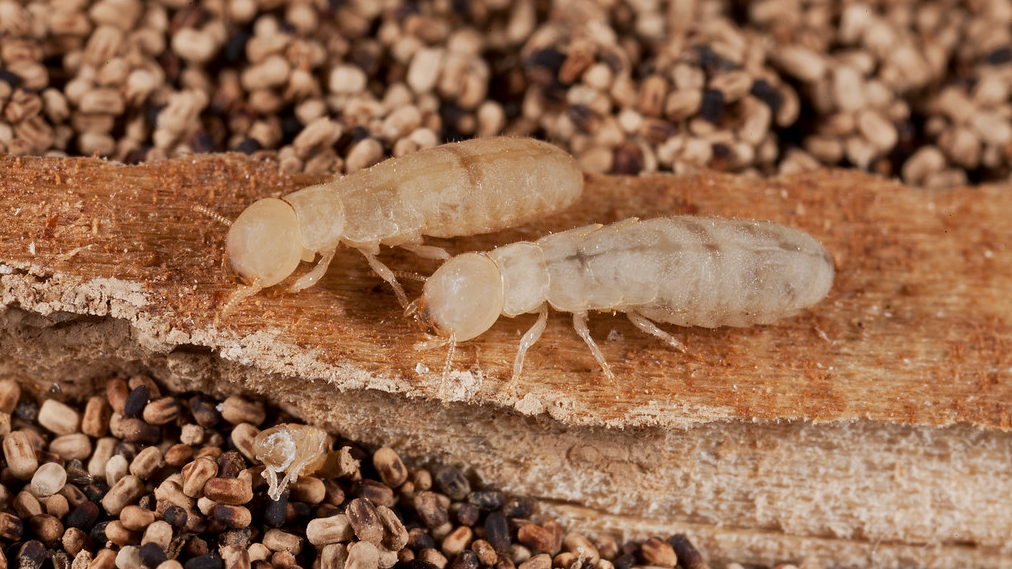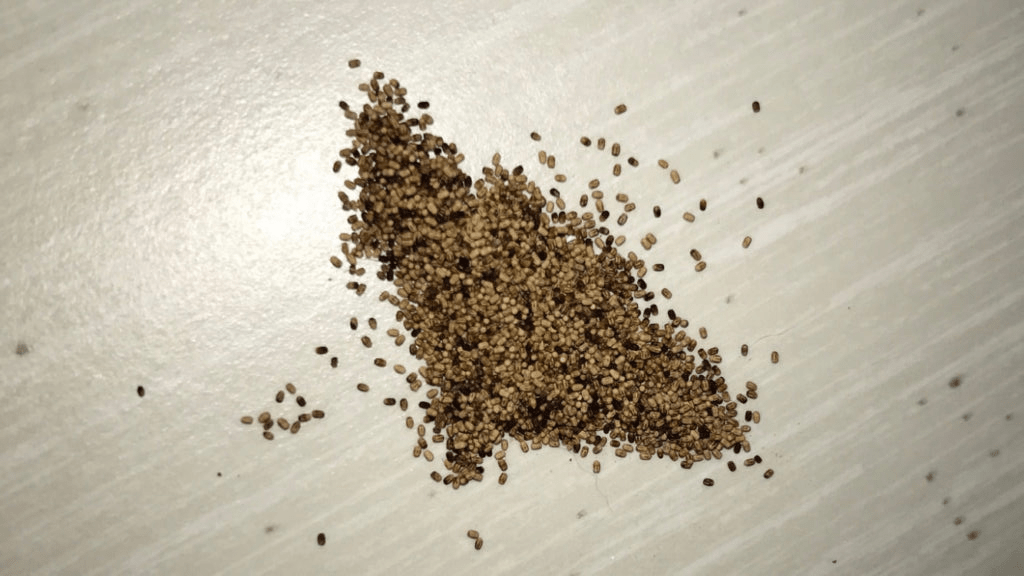Drywood termites (Kalotermitidae)
Drywood termites (Kalotermitidae) are a species of termites, unlike the others.
This uniqueness is because of their wood preferences and the specific behaviors that differ from subterranean termites. As their name would suggest, they prefer dry wood and can endure dry conditions for long periods. They are also less common than subterranean termites and generally live in coastal or humid regions. In the United States, this includes the southern coastal states stretching from Florida to California.

Specificities of drywood termites
While the damage these pests can cause is just as detrimental as subterranean termites, their actual habits and behaviors are quite different. One of the most important differences is the drywood termite’s ability to go for long periods in dry conditions. This ability is due to their ability to adapt and retain the water present in the wood they eat. To hold on to this water, they reabsorb the moisture from their feces before defecation which explains the production of fecal pellets. Drywood termite fecal matter, or frass, is small and oval-shaped and removed from the wood via kick-out holes. Their galleries are typically very clean since they dispose of the frass and due to the lack of soil needed to survive.
Another difference between drywood and subterranean termites is the social structure of their colonies. While drywood termites do have a queen and a king, the overall setup of the caste system is different. More specifically, most drywood species do not have a true worker caste similar to other termites. Instead, their colonies have pseudergates, or “false workers,” that serve as workers until they develop into adult soldiers or alates. This is representative of their hemimetabolous life cycle. That means members evolve from immatures into adults without passing through a pupal stage. Despite having these pseudergates, drywood termite colonies are smaller than subterranean termites since they live inside the wood they infest.
How to identify and detect drywood termites
When it comes to identifying and detecting drywood termites in the home, there are a few key elements that may assist the process. In terms of physical characteristics, drywood termites, like many other species, are most easily identifiable by their alates. Drywood termite alates vary in size and color depending on the species, ranging from a light yellowish-brown to black. Like all termite alates, they are distinguishable by the two pairs of same-sized wings. However, most drywood termites’ wings are distinct with unique, visible veins compared to other species.
As for the other termite castes, both drywood termite soldiers and workers tend to be larger than their subterranean counterparts. Other than their size, workers, or pseudergates, tend to resemble other species ranging from a creamy white to light brown color. They have no additional distinguishing features other than the fact that they will not remain workers. Instead, pseudergates will eventually become soldiers or alates. The heads of drywood termite soldiers are darker in color and have large dark mandibles measuring between ⅓ to ½ inches in size.
What are the signs of termite infestation?

Physical signs of infestation
Although drywood termites are harder to detect, there are a couple of physical signs indicating a nearby infestation. Like all termite species, drywood termite alates will leave the nest to find a mate to establish a new colony. This process, known as swarming, typically happens in the late summer but can occur as late as November. This period is dependent on the region and the specific species of drywood termite in question. With swarming season comes the apparition of flying termites and discarded alate wings. However, drywood termites lose their wings more quickly than subterranean termites meaning it is more likely to find dead swarmers without their wings. Finding either of these signs inside the home is a strong indicator of an active infestation.
Other than actually seeing the drywood alates or their wings, there is always the possibility of finding drywood termite frass. As stated before, drywood termites inhabit the wood they infest so they use kick-out holes to remove frass (termite droppings) from inside. Frass is generally found in small mounds of pellets sometimes described as looking like coffee grounds or sawdust. While frass varies in color based on the type of wood consumed, the pellets tend to be 1 to 2 mm in diameter and are six-sided. Although the presence of frass is a top sign of drywood termite infestation, this does not always mean an active infestation. Frass may continue to exit from the wood even after treatment of the infestation and once it becomes inactive.
How to treat drywood termites
Damages
Damage by drywood termites may go easily undetected as they can eat all the wood leaving only the surface behind. As a result, the remaining wood consists of a thin layer of paint and wood that appears to have a rippled effect. If the wood were split open, it would be possible to see the large feeding galleries connected to the smaller galleries used to move around the wood. Since they can retain the moisture from the wood they consume and infest dry wood, the damage usually occurs in several places. Inside the house, they can attack furniture, door and window frames, flooring, and subflooring, while outside they attack decks and porches. Regardless of the potential signs or damage found, it is always recommended to contact a pest professional for a proper inspection.